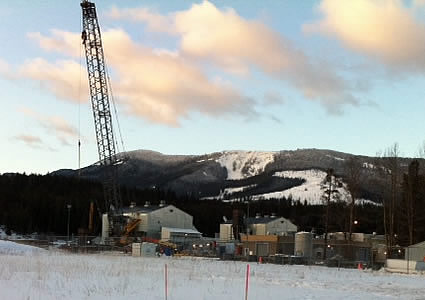TransCanada Pipelines embarks on major upgrade of Crowsnest compression station

If you drive by the Crowsnest compression station of TransCanada Pipelines these days you can’t help but notice that it is a beehive of activity as a major upgrade to the plant is underway.
Here is some background on TransCanada Pipelines, one of the Kootenays' major employers.
TransCanada PipeLines Ltd. transports the greatest volume of gas in North America. It operates 37,000 kilometres of pipeline in Canada as well as important interests in various Canadian and American pipelines totaling another 6,500 kilometres.
TransCanada's B.C. system operates a 171-kilometre pipeline transporting gas from the Alberta-British Columbia border, through the Rocky Mountain chain in the southern part of British Columbia, up to the border of Idaho. At that point, PG&E Gas Transmission-Northwest distributes it through its own lines to the centres of consumption in California.
This pipeline is fed with natural gas from TransCanada's Alberta System near Crowsnest, Alberta. The gas is transported to PG&E Gas Transmission-Northwest in Kingsgate, British Columbia. The line runs with the 36-inch and 42-inch pipeline of Foothills Pipe Lines (South B.C.) Ltd., also operated by TransCanada, through the Rocky Mountains to the Moyie River Valley where it is parallel to the road and the railway. At the Flathead Ridge, the pipelines reach the highest altitude, (2,100 metres) 6,900 feet, in the entire Alberta-California system.
Compression stations are located at Crowsnest (Station 1), Elko (2A) and Moyie (2B). These stations contain 11 compressors driven by gas turbines totaling 136,779 kW of power. This system is fully automated and designed to be operated unmanned from two dispatching rooms, the first at the Crowsnest station and the second at Cranbrook, British Columbia.





Comments